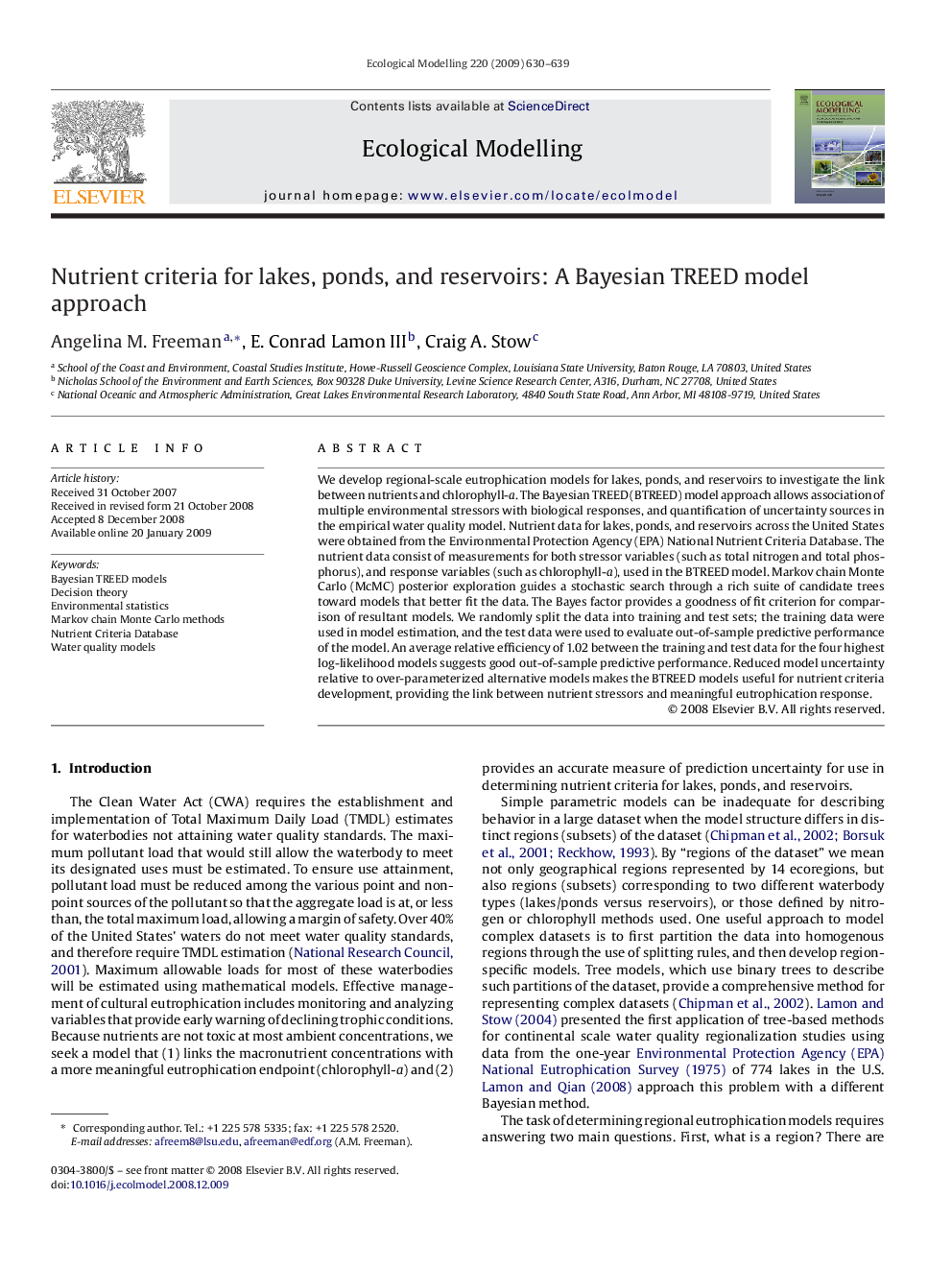| Article ID | Journal | Published Year | Pages | File Type |
|---|---|---|---|---|
| 4378192 | Ecological Modelling | 2009 | 10 Pages |
We develop regional-scale eutrophication models for lakes, ponds, and reservoirs to investigate the link between nutrients and chlorophyll-a. The Bayesian TREED (BTREED) model approach allows association of multiple environmental stressors with biological responses, and quantification of uncertainty sources in the empirical water quality model. Nutrient data for lakes, ponds, and reservoirs across the United States were obtained from the Environmental Protection Agency (EPA) National Nutrient Criteria Database. The nutrient data consist of measurements for both stressor variables (such as total nitrogen and total phosphorus), and response variables (such as chlorophyll-a), used in the BTREED model. Markov chain Monte Carlo (McMC) posterior exploration guides a stochastic search through a rich suite of candidate trees toward models that better fit the data. The Bayes factor provides a goodness of fit criterion for comparison of resultant models. We randomly split the data into training and test sets; the training data were used in model estimation, and the test data were used to evaluate out-of-sample predictive performance of the model. An average relative efficiency of 1.02 between the training and test data for the four highest log-likelihood models suggests good out-of-sample predictive performance. Reduced model uncertainty relative to over-parameterized alternative models makes the BTREED models useful for nutrient criteria development, providing the link between nutrient stressors and meaningful eutrophication response.
